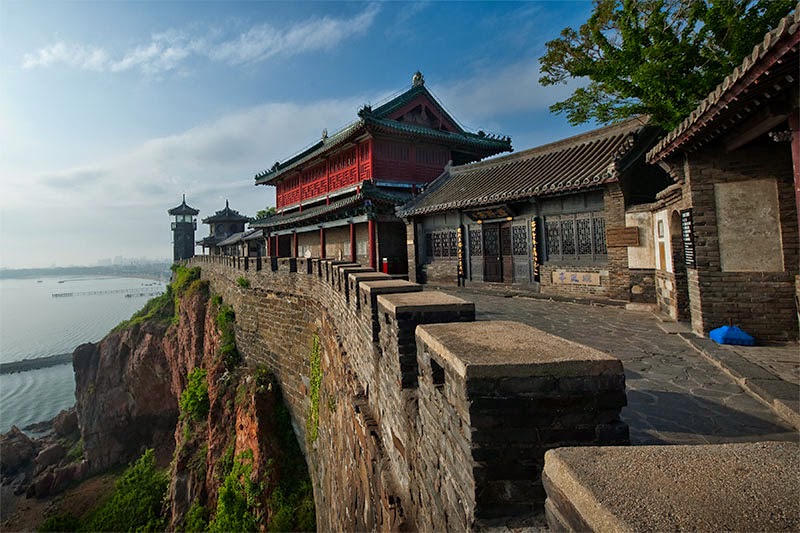(Reuters) - To make vacationing in a country still under martial law a little more attractive, Thailand’s military junta is offering tourists from China free visas.
Chinese are the biggest visitors to Thailand, accounting for 18 percent of total arrivals in July, but they also proved among the most nervous, with numbers slumping more than other nationalities after May's military coup. Tourism accounts for about 10 percent of the Thai economy, and the imposition of martial law in May after the coup hit the industry hard. Winning back the Chinese visitors is imperative - spending by mainland tourists jumped 80 percent to $6 billion in 2013 from 2012.
The slump in tourist numbers after the coup was much more pronounced among visitors from East Asia than from Europe.
Chen Wei, the manager of an outbound travel department for Asia at Shanghai Huating Overseas Tourist Co, said his firm had only one group of 20 tourists a week traveling to Thailand this month, compared with two to three groups a week of more than 30 tourists each last year.The number of visitors from China fell 41 percent in June - the first full month under military rule - from Hong Kong 46 percent, Japan 25 percent, and Korea 29 percent, while arrivals from Europe fell by three percent.
The Tourism Authority of Thailand said its new tourism promotion measures included a 30-day extension of stay for visitors from 48 countries and one territory, in addition to the free visa for Chinese guests, although tourists from many other countries don't need holiday visas.
The return of some normality to Thailand, and possibly the 1,000 baht ($30) visa saving, could be starting to work with visa applications from China rising, while tourism operators say visitor numbers picked up last month.
With less than half their rooms filled, compared with occupancy rates of 60 to 65 percent in July 2013, Thailand’s hoteliers are impatient for martial law to be lifted now that political unrest has subsided.
"It was eerily quiet in June and July," said Boonchai Suwatsakulsawasd, general manager of the Centara Duangtawan Hotel in Chiang Mai, which targets Chinese tourists. "It only got better in August."
The fall in Chinese tourist numbers was keenly felt in Chiang Mai. The northern city became a favorite with Chinese tourists in 2012 after featuring in the Chinese box-office comedy hit "Lost in Thailand", which portrayed the travel adventures of two Chinese men.
Tatcha Riddhimat, general manager of the Dusit D2 Chiang Mai hotel, said the number of Chinese guests at his hotel fell nearly 90 percent in June and July.
MARTIAL LAW
While the number of Chinese visitors appears to be on the rise again, the total for this year is forecast to fall short of the record 4.6 million who visited in 2013.
The Tourism Authority of Thailand (TAT) has revised up its estimates for mainland visitor numbers this year to 4.3 million from about 4 million, said Thawatchai Arunyik, governor of the TAT.
That would still be down over 6.5 percent on the year. In January-July this year, Thailand had 2.2 million Chinese visitors, down about 24 percent from last year. The agency expects a total of 25.5 million tourists this year, about a million less than in 2013.
Foreign tourists may have ruled out Thailand because most travel insurance policies have exemptions specifying that claims will not be paid if they are a result of martial law or civil unrest, and many countries have maintained travel warnings on Thailand.But from late July, international tourists visiting Thailand can buy special insurance coverage known as the "Thailand Travel Shield" set up by the TAT in cooperation with four well-known Thai insurance companies, which might have helped with the recovery.
The military government said it was considering lifting martial law, particularly in areas that attract a lot of tourists, a junta spokesman said on Wednesday.
"We need to lift martial law to get business going quickly," said Surapong Techaruvichit, president of Thai Hotels Association. Thai tourism has bounced back before, recovering quickly from protests in 2010 that closed parts of central Bangkok for weeks before a military crackdown.
Credit Suisse forecast a sharp rise in tourist numbers for 2015, and consequently increased its 2015 economic growth forecast to 4.5 percent from 3.9 percent. It sees growth of only 0.9 percent for this year.
($1 = 32.0 Thai Baht)
Source: Reuters by Orathai Sriring and Pairat Temphairtojana
















































